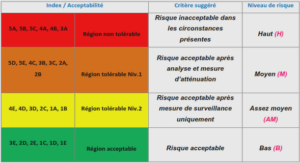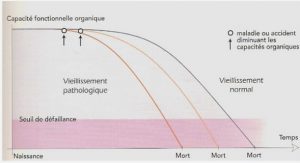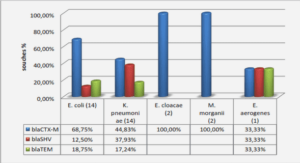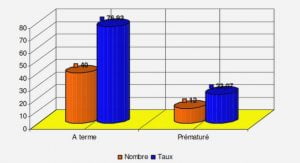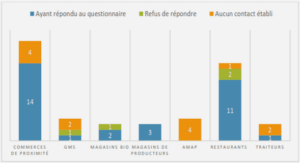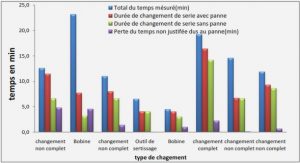Impedance relay Theory and Its relationship with Load Encroachment Technique
LITERATURE REVIEW:
The traditional distribution network is primarily composed of radial feeders, designed for unidirectional power flow. Therefore, many operation regulation, protection and control system, in distribution network, are based on the radial distribution systems assumption. The high integration of the RES, will clearly impact the distribution systems operation.
In this chapter, the impacts of RES integration to the distribution system operation are explained. Then, the necessity of distribution system monitoring is explained.
RES integration impacts on power flow and voltage control :
This section focuses on the main impacts of RES integration on distribution system power flow and the feeder voltage control. Traditional distribution system was designed radially with unidirectional power flow. The voltage drop is one of the main concerns of traditional distribution system design.
Meanwhile as the voltage decreases from the substation to the end of the feeder, the probability of over-voltage occurrence is relatively small. Increased integration of DGs and RES in last decade has changed this phenomenon and the probability of over-voltage occurrence especially at the end of radial feeder increases. Consequently the voltage rise; due to the increased penetration of DGS and RES, became the main limiting factor for their integration (Appen et al., 2013; Aziz et al., 2013; Demirok et al., 2011; Ehara, 2009; Turitsyn et al., 2010; Verhoeven, 1998; Viawan, 2008). Figure 1.1 shows the effect of injected power by PV on voltage profile of a feeder. The green line shows feeder voltage profile without PV. By adding the PV effect on voltage profile (black line) the voltage at end of feeder may exceed the over-voltage limit.
Literature review in distribution system monitoring :
Widespread real-time monitoring of distribution system, because of the high number of feeders and lack of the communication system was impossible for a long time. By decreasing the price of communication system, full deployment of smart meters seems applicable for implementing the smart grid in distribution system level. Monitoring of a distribution system due to its time varying and unbalanced loading, through smart meters and monitors is one of the basis of smart grid (Tcheou et al., 2014). Different monitoring system approaches and devices have been proposed to assess different conditions of distribution systems. Power quality monitoring system has been used for a long time not only for analyzing power quality issues but also for load modeling (Visconti et al., 2014). (Qiang et al., 2012) proposed a voltage monitoring for micro grid application, to analyze the power quality and reliability indices. Using state estimation technique is one of the most popular solutions proposed in the literature for distribution system monitoring. The authors in (Bernieri, Liguori et Losi, 1995) proposed using the on-line system modelling capability of artificial neural network (ANN) for distribution system state estimation. The application of branch current state estimation method has been proposed in (Baran et Kelley, 1995),(Baran, 2012) for real time monitoring and control of a distribution feeder. Authors in (Ferdowsi et al., 2014) proposed an ANN based monitoring system for better voltage magnitudes estimation of distribution feeder in presence of distributed generation (DG). (Powalko et al., 2009) proposed to use phasor measurement units (PMU) for improved distribution system state estimation.
The renewable energy sources network integration affects the traditional Volt-VAR control, power factor correction and voltage regulation (Bollen et Hassan, 2011). The impacts of high PV penetration on distribution system protection and operation were analyzed in (Baran et al., 2012). Unidirectional power flow was the first design criteria for distribution system planning for decades. Under this assumption the voltage profile is maximum at the feeder head and decreases proportional with loads to the end of the feeder (Kersting, 2012). Depending on the size and location of variable generation and the load size, the power flows may reverse in the feeder [2]. Therefore, the current distributions system vulnerability increases by RES generation. The high RES penetration increases the necessity of deployment of monitoring devices for different purposes.
Distribution system monitoring necessity:
As it was stated in the introduction, contrary to transmission systems, due to high number of feeders and elements, distribution systems suffers lack of sufficient monitoring devices. In this section some challenges which raise the necessity of deployment of monitoring units in distribution network will be presented briefly.
• Distribution systems have been designed for radial and unidirectional power flow. In this design the active and reactive power are transferred from the transmission system to consumers. Therefore, many protection and voltage regulation strategies in distribution networks are based on radial nature. For example, voltage regulators are designed with the flow of power from the higher voltage to the lower voltage. Integration of the RES to distribution systems, however, shows that based on the size and the installation location, the power flow may reverse (Jahangiri et Aliprantis, 2013). For high penetration of RES, traditional unidirectional distribution system will change to bidirectional system which needs a revision of regulation;
• The minimum voltage drop which must be kept within the standard limits was the main concern of distribution system planners for a long time. On the other hand, the feeder overvoltage was not a concern for distribution system design. With RES integration the over-voltage possibilities become one of the main design concerns (Bollen et Hassan, 2011);
• From a practical standpoint the real distribution system has non-uniform load distribution, distributed load location and different wire sizes. The designer considers increased wire size for contingency-support branches during special situations (Short, 2014). Distributed RES integration with intermittent characteristic increases the vulnerability of small wire size feeder to overload conditions;
|
Table des matières
INTRODUCTION
CHAPITRE 1 LITERATURE REVIEW
1.1 RES integration impacts on power flow and Voltage control
1.2 Proposed method in the literature for detection of power flow variation and voltage control at high penetration of RES and DG
1.3 Literature review in distribution system monitoring
1.4 Distribution system monitoring necessity
1.5 Conclusions of literature review and refining the problematic
CHAPTER 2 A Monitoring Technique for Reversed Power Flow Detection with PV Penetration Level
2.1 Introduction
2.2 Measured Impedance Theory and Its Application on Reverse Power Flow
2.2.1 Theory of impedance method
2.2.2 Apparent impedance relationship with power flow direction
2.2.3 Impedance measurement
2.3 Case Study
2.4 Simulation Result and Discussion
2.4.1 Impact of PV penetration Level on measured impedance
2.4.2 Impedance variation due to normal load deviation
2.4.3 Analyzing the impact of unbalanced distribution system on the measured impedance
2.4.4 Impact of load power factor variation
2.4.5 Impact of non-unit power factor operation of PV inverter
2.4.6 Investigating the measured impedance trends during fault
2.4.7 Analyzing the capability of proposed method for fast transients
2.5 A practical application of impedance method
2.6 Conclusion
CHAPTER 3 An Impedance Based Method For Distribution System Monitoring
3.1 Introduction
3.2 Distribution system monitoring necessity
3.3 Measured impedance trajectory and power flow
3.3.1 Impedance measurement
3.3.2 Mapping between P-Q and Z plane
3.3.3 Special Cases
3.3.3.1 Minimum forward reactive power flow limitation
3.3.3.2 Minimum active power flow limitation
3.3.3.3 Fixed power factor
3.4 Case Study
3.5 Simulation Result and Discussion
3.5.1 Reverse power flow detection
3.5.2 Monitoring the feeder PF
3.6 Practical implementation of monitoring method
3.7 Conclusion
CHAPTER 4 A Modified Load Encroachment Technique for Power Factor
4.1 Introduction
4.2 Impedance relay Theory and Its relationship with Load Encroachment Technique
4.2.1 Impedance measurement
4.2.2 Current infeed due to DG integration
4.2.3 Distance relay Load Encroachment scheme
4.2.4 Relationship between R-X plane and P-Q plane
4.3 Load Encroachment Monitoring Technique
4.3.1 Analyzing the power factor variation reasons
4.3.2 Fixed power factor line mapping from P-Q plane to R-X plane
4.3.3 Modified Load Encroachment Monitoring Technique
4.4 Case Study
4.5 Simulation Results and Discussion
4.5.1 Impedance and power factor trend due to normal load deviation
4.5.2 The feeder PF monitoring with RES integration
4.6 Conclusion
CONCLUSION
LIST OF BIBLIOGRAPHICAL
![]() Télécharger le rapport complet
Télécharger le rapport complet

